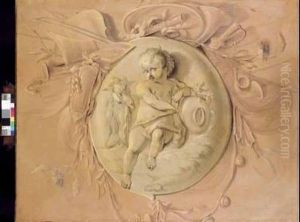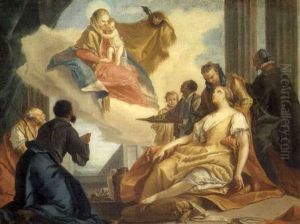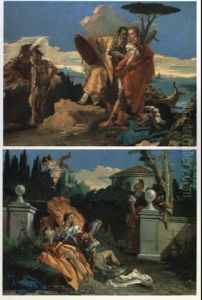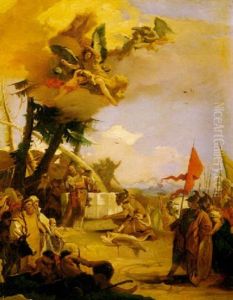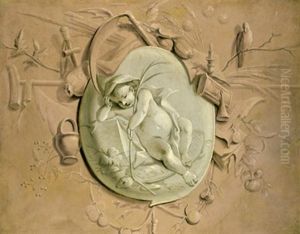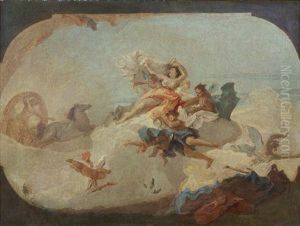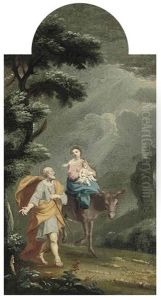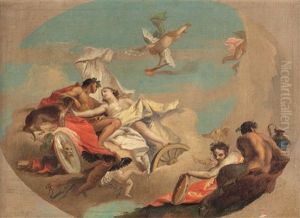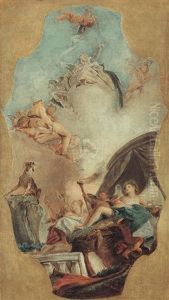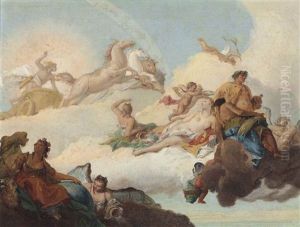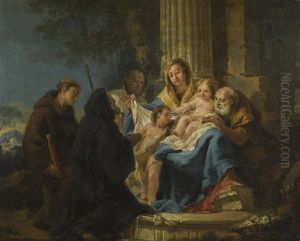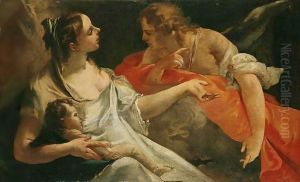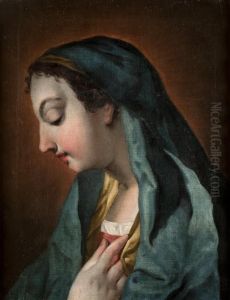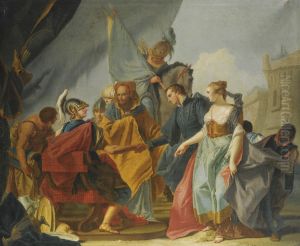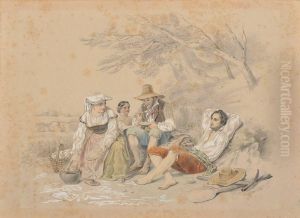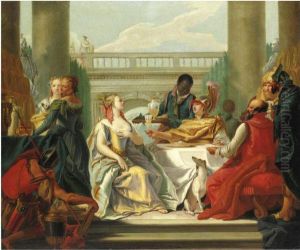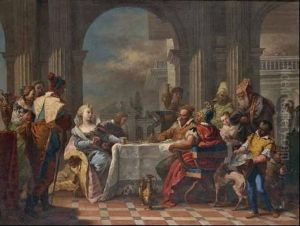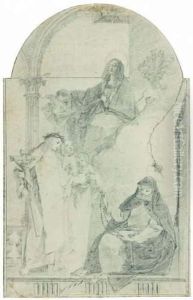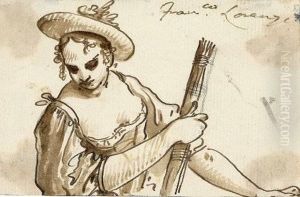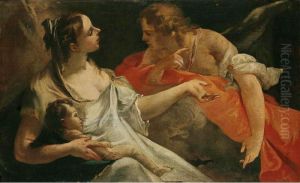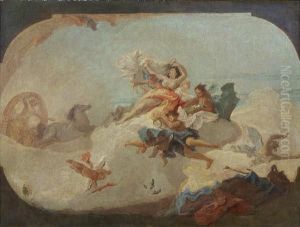Francesco Lorenzi Paintings
Francesco Lorenzi was an Italian painter, born in 1723 in Verona, Italy, and died in 1787. He was a prominent figure in the Rococo style, which is characterized by its ornate and decorative qualities, emphasizing lightness, elegance, and the use of curving natural forms. Lorenzi's works are notable for their vibrant colors, intricate details, and dynamic compositions, making him a significant contributor to the late Baroque and early Rococo movements in Italian art.
Lorenzi received his early training in Verona, under the guidance of local artists who were instrumental in shaping his artistic direction. His talent was evident early on, and he quickly gained recognition for his exceptional skill in painting religious and mythological subjects. Lorenzi's work was deeply influenced by the grandeur and drama of the Baroque era, yet he infused his paintings with a lighter, more graceful touch that was indicative of the emerging Rococo style.
Throughout his career, Francesco Lorenzi worked on various commissions for churches and noble families, including altarpieces, frescoes, and decorative panels. His ability to blend spiritual themes with aesthetic beauty made his works highly sought after by patrons across Italy. Lorenzi was particularly adept at capturing the nuances of human emotion, rendering his figures with a sensitivity and expressiveness that brought his scenes to life.
Despite his success, Lorenzi's life was not without challenges. The shifting tastes of the art world towards Neoclassicism in the late 18th century meant that Lorenzi's Rococo style gradually fell out of favor. Nevertheless, his contributions to Italian art remained influential, and his works continue to be studied and admired for their technical mastery and artistic innovation.
Francesco Lorenzi's legacy is preserved in the collections of various Italian museums, where his paintings stand as testaments to the richness and diversity of 18th-century Italian art. His dedication to his craft and his ability to capture the spirit of his time make him a noteworthy figure in the history of art.
